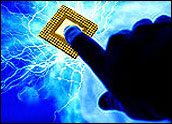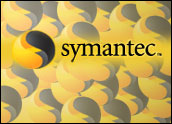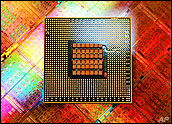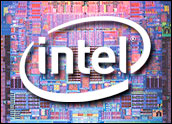
IBM and TDK are jointly researching and developing a new form of high-speed computer memory that should use less power, last forever and hold information when power is lost.
The companies are looking into spin momentum transfer technology as a way to create the high-capacity MRAM (Magnetic Random Access Memory). Harnessing the spin momentum transfer effect “will allow a much more compact memory cell than is possible with present approaches,” TDK and IBM said.
Different Skills
The companies’ proficiency in different fields of high technology makes them ideally suited to team up for the cutting-edge research, the companies said.
The project will “leverage their respective expertise in areas of fundamental research for new memory technology and magnetic device development,” the companies said. The goal is to create a highly dense MRAM integrated circuit (IC) that can be used as stand-alone memory “or embedded into other IC solutions,” said IBM and TDK.
The work will be conducted in the United States at various facilities, including IBM’s TJ Watson Research Center in Yorktown Heights, N.Y., its Almaden Research Center in San Jose, Calif., and its ASIC Design Center in Burlington, Vt. There will also be research conducted at TDK’s subsidiary research and development center in Milpitas, Calif.
A Good Marriage
The pairing at least looks good on paper, said Rob Enderle, principal analyst at the Enderle Group.
“Between IBM and TDK, there is a rather massive amount of legacy intellectual property, and I can’t think of any other two companies that combined would have more capability to pull this off,” Enderle told TechNewsWorld. “On the other hand, partnerships like this don’t always work out. So while there is a lot of promise, the devil will be in the details and execution.”
The project reinforces IBM’s “commitment to explore new phenomena for memory applications” as it will focus on developing “advanced magnetic materials in demanding memory chip designs,” said T.C. Chen, vice president of science and technology.
Both Capable Companies
The pairing should “broaden the application of magnetic materials which has been TDK’s core technology since 1935,” said TDK Chief Technology Officer Minoru Takahashi.
Both companies already have embarked on major research and have patents in design and materials for magnetic memory. IBM has been at the forefront in developing MRAM, and is “a pioneer in the fundamental research and development of the magnetic tunnel junction (MTJ) and in the prediction and study of the spin momentum transfer effect upon which the memory is based,” IBM said.
TDK is a world leader in applying the MTJ technology into hard-drive recording heads, the company said.
Many Benefits
MRAM “offers significant advantages” over competing types of memory technologies. These include “low power usage, high speed, unlimited endurance (read and write cycles) and inherent non-volatility (retains data without the need for continued power),” the companies said.
However, the widespread use of MRAM has been hindered because it is currently too costly to increase MRAM capacity, according to the two companies. Spin momentum transfer technology likely will solve that problem as it “enables MRAM to significantly reduce cell size and thereby increase capacity cost-effectively while maintaining the low power, endurance and non-volatility advantages,” the companies said.
The hope is that clearing these hurdles will make MRAM a “preferred solution” for memory needs in a number of fields, including automotive, mobile phones, handheld computing and industrial controls.
A Chess Game
“We are approaching the end of two key technologies: hard drives and optical drives,” said Enderle. “IBM already divested much of their core hard-drive capability to Hitachi but still has a massive interest in hard drive-based storage. TDK remains very active in both media and drives on the optical side.”
If MRAM is the technology that will replace those forms of media, “it makes sense that both of these companies would be interested in making sure they were at the forefront of that change,” Enderle said.
The advances in processors is necessitating the type of work in which IBM and TDK are engaged, said Jack Gold, founder and principal of J. Gold Associates.
“Memory technology must evolve to keep pace with the newer generation of chips,” Gold told TechNewsWorld. “Further, solid state memory could ultimately replace many hard drives if the density and cost are reduced as magnetic drives will have a cost/density advantage for many more years, but solid state could catch up if newer, faster, lower cost technologies catch on.”
The IBM/TDK corroboration has several noteworthy implications, Gold said. “First, working on newer technologies that allow for faster and more dense memory chips. Second, enabling a more robust technology to compete with magnetics. Third, a way for IBM and TDK specifically to advance their own business models — TDK with mass storage, IBM with denser and more capable CPU chips.”





















































